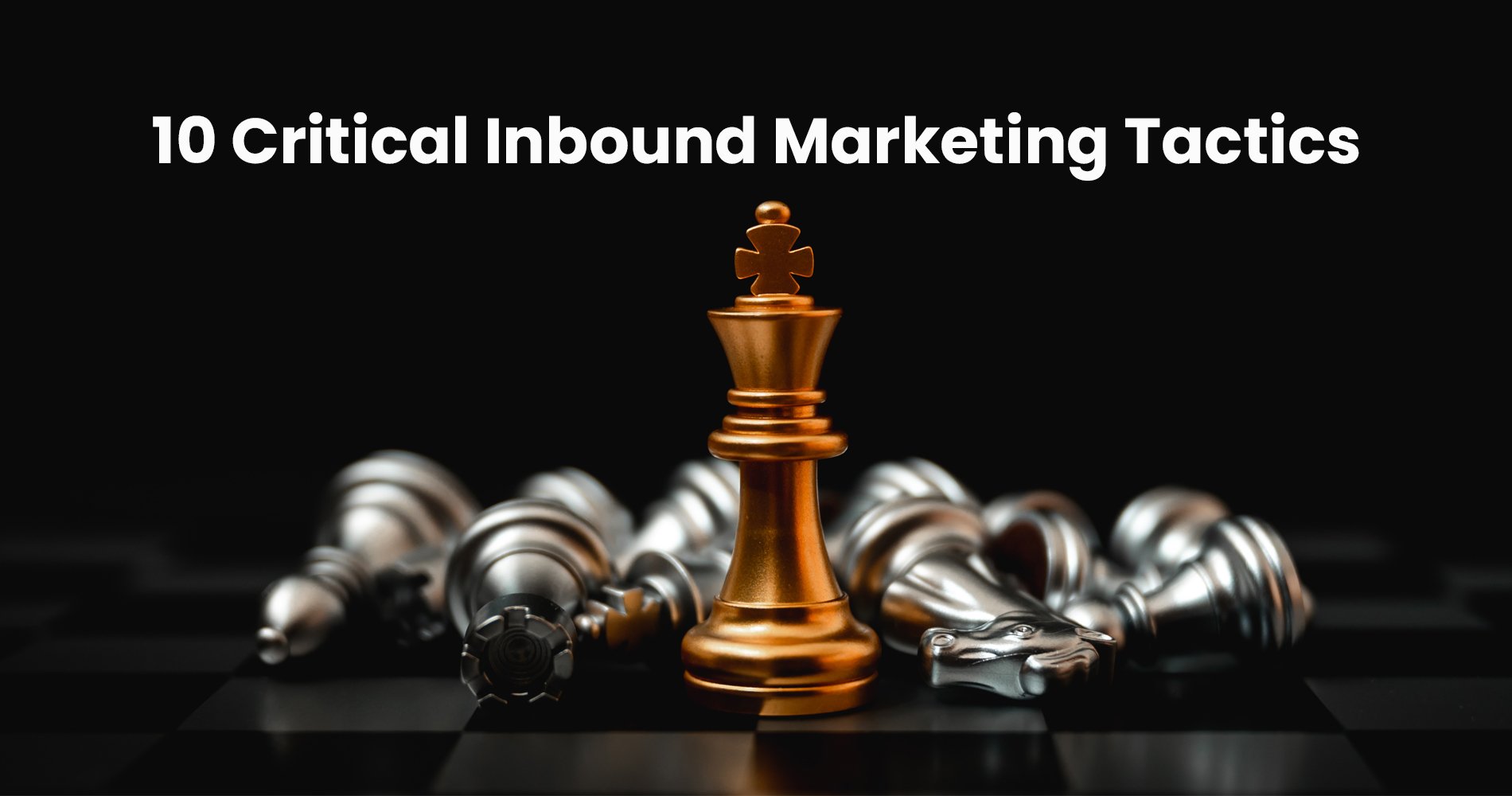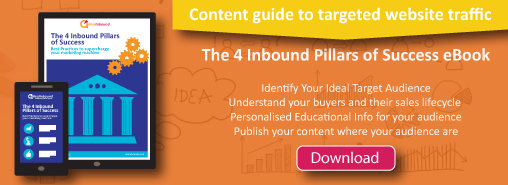A solid Inbound Marketing Strategy is made up of best practices that act as pillars of your foundation. These strategies have been proven to bring visitors to your site and engage them throughout their journey, transforming prospects into customers. Every day we are challenged with how to acquire more quality leads and offer the best products at the very moment they need them. Inbound marketing gives us a place to start, by using methods such as blogging, search engine optimisation, and e-mail marketing to be top of mind in front of our target audience.
Inbound marketing strategy is a method for attracting customers and offers helpful content at every phase of their buying journey. It’s about a marketing funnel that starts with education, forging a relationship, moving the lead towards opportunity, and finally your product or service. To attract leads using this process you need to be sure that all your bases are covered, from having a content plan devised to start developing your online presence, defining the buyer persona areas you expect to appeal to, and mapping out where on the web they’ll most frequently look among other things. If any pieces could use improvement in an owner’s inbound marketing strategy, these can be filled after as all foundational components must be in place before attempting any program goals or tactics.
So, what exactly is an inbound marketing plan? There is no one way to go about it, as much of your strategy will depend on how you conduct business, who your customers are and what they want, as well as the overall goals you have set out for your company.
1. Blogging
Blogging is an effective way of reaching out to the online community. For this reason, blogging plays a key role in the overall success of an Inbound approach. Start by structuring your topics around the challenges and needs of your target market.
When it comes to blogging, there's no shortage of information out there. And while you may have heard that the consensus is that mixing up your blog posts keeps readers engaged, many of the most successful blogs typically post on one specific topic that resonates with their audience. Understanding what drives readers' interest can help foster reliability and efficiency among your team members. Even if it seems like a lot of work or time to keep an article going consistently (around once every week or so), we find that starting and keeping a blog post about one specific thing gets easier as you go along - but you'll only know for sure if you try! Nothing ventured, nothing gained...
2. Professional Content Creation
Advanced content offers are the most powerful of all the inbound marketing tools. They're not just great for creating new contacts but guiding your existing contacts and drawing them deeper into your sales funnel. It's usually best to offer more than one advanced content piece for each person you reach out to.
These pieces tend to be very easy to put together since they often expand on the content you've already written or consider what your prospects might want next after reading your last blog post or email newsletter. Advanced content is best when used as a call-to-action at the end of blog articles, webinars, and other online resources because these tools are so powerful that they can easily grab someone's attention when it may otherwise have been lost.
3. Video Content
There's no doubt that video content is a valuable platform to get your company, brand, or service in front of live clients - it's just one of the many advantages to blogging on regular basis. The video traffic online traffic has increased exponentially in recent years. Not surprisingly, we think this upward trend will continue as it is one of the most effective ways of nurturing relationships with customers. If you're considering creating your library by writing several blog posts about a specific topic, why not try and complement those articles with short YouTube videos instead?
Video content can be used to spark prospects' interest in the industrial manufacturing space, such as customer testimonials, product demos, capability demos, case studies, and video blogs. A key aspect of educating your audiences is making them aware of the value of your products or services.
- Bringing content to the public
Now that you have mapped out a strategy and produced all this great content, what do you do with it? Here are some tips for making sure your hard work on content creation is rewarded:
- Know your audience
- Find out how they are consuming and sharing content
- Find out what types of content they enjoy and are willing to share
- Explore creative topics and attract attention with attention-grabbing content
- Establish and maintain relationships
- Participate in community conversations related to your industry
- Always write with a human perspective, for a human audience
To gain exposure and authority in your industry, consider guest blogging on other sites that offer valuable content your readers find on your own blog.
Having your sales team distribute your content is another great way to distribute it. Your sales reps can easily select and share helpful, relevant content directly with prospects when they have access to a content portfolio for each phase of the buyer's journey.
Promoting a product or service requires a team effort. Creating content offers that can be shared by your company page on social media is not just about providing easy click-throughs. Share your content on the platforms your prospects are most likely to use. A paid ad is also a good tool for generating leads at events or when launching new products.
5. Email Marketing
Email marketing outlines what type of content prospects have signed up for and helps you organise a workflow strategy that's built around the sequence when potential customers are expected to make specific purchases. Things like sending them an article they've linked to on their blog through subscribing or providing them with competitive intelligence they might be interested in if they're signing up to get advice from someone professionally can help you build trust through the early stage of the buying cycle. By sending relevant information at appropriate moments, you maintain control over how prospects receive communications.
6. Lead Nurturing & Automation Workflows
Marketing automation is a tool that allows you to automate your mail marketing and automating tasks for email marketing can be seen as beneficial. According to HubSpot, 67% of marketers are using automation. At the same time, 70% of companies that automate report a benefit of better-targeted customer communication. Among the many benefits of marketing automation is its ability to streamline lead nurturing workflows by aligning content promotion with the buyer's journey and prospect behaviors. The platforms allow users to create targeted, efficient automated workflows through logic and behavior.
7. Search Engine Optimisation (SEO)
We’ve been talking about the importance of blogging and advanced type content, but without a search engine optimisation strategy, this content might never be found organically in the first place. SEO is integral to almost every part of an effective inbound marketing strategy. Quality SEO starts with keyword research and a well-defined keyword strategy that homes in on wordings and phrases your potential target personas may search as well as considering any business goals you might have (e.g., raising brand awareness).
A variety of factors affect SEO, including user experience (for example, a mobile-friendly design and website security). The first step is to find the most relevant keywords for your business based on your customers' needs, and then to create content around those keywords.
8. Growth-Driven Design
In the past, websites were expensive to launch and maintain, only to sit unchanged for a few years before becoming obsolete again. Iterative, user-centric, data-driven improvements to websites are the hallmarks of Growth-Driven Design. To achieve a better user experience, and guide users toward content that is most relevant to them, GDD analyses your website's user behaviour continuously.
Conversion Rate Optimisation (CRO) is one of the major benefits our clients experience when they implement GDD for their website. We have successfully decreased form abandonment rates and improved data collection by analysing user behaviour and data on forms pages.
9. Implementing the Voice-of-the-Customer Program (VOC)
Once you have become successful in building your business and converting prospects into loyal customers, it's important to cultivate your client relationships. You can do this by using client testimonials as great tools for both new and returning customers. By implementing a VOC program, you'll be able to gather testimonials from the people who trust your style and appreciate the work that you've done. Doing this takes a lot of skill; you need to get consent from each of these clients before recording them or taking any photos or videos of them as they voice their opinions on your brand or project. With the information that they provide you'll be able to know what works well with your messages (or message style) and what hasn't really made an impact...and then adapt accordingly giving yourself an advantage over other project managers who don't use this sort of approach.
A well-defined VOC program helps you see through the lens of your customers and prospects. You can gain so much insight that transcends sales and marketing departments. It gets you excited about identifying business growth opportunities like service improvement areas, new product ideas, and potential threats to your company’s success. An effective validation program helps you stay aligned with existing projects and processes as well as continue delighting both prospects and customers!
10. Enabling Sales
To get inbound to work efficiently for your organisation, you need to align your sales and marketing teams. Sales enablement is one way to achieve this. The bottom line is that by making sure your sales team has access to the optimal tools and resources they need, you make it a lot easier for them to close more deals.
What's the best way to get started?
Hopefully, by now, you are familiar with the value of each of these inbound marketing tactics and how each interconnect with the others and depends on them for success. It's wise to let go of your previous notions now and then but remember that your inbound program is constantly growing and changing (just as things grow and change as they age), so it's also wise to measure and evaluate tactics to adjust when necessary. Are you ready to take advantage of inbound marketing? Start by reading our Guide to Inbound Marketing!




